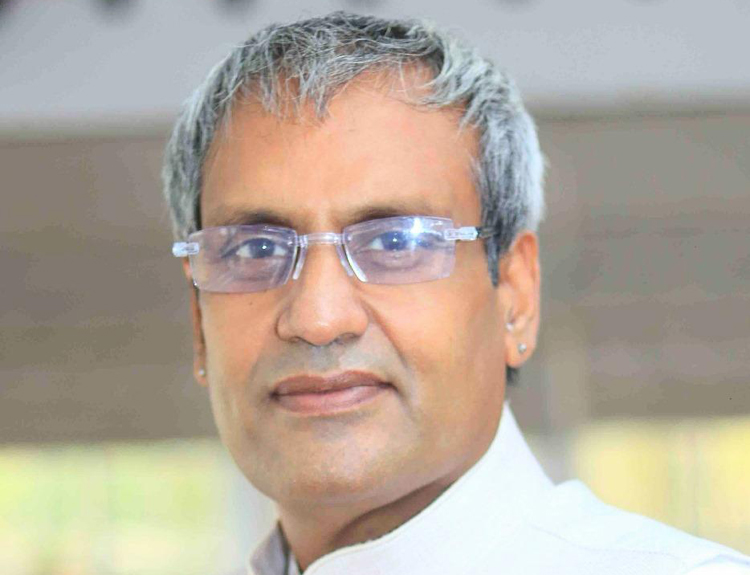April, 4, 2024

India and Sri Lanka share ties dating back thousands of years spanning history, culture, trade and commerce. In recent years, the two neighbours have accelerated mutual economic cooperation in a manner that has opened unprecedented opportunities for Sri Lankan businesses to access an $3.7 trillion Indian economy. A key turning point in the economic cooperation between India and Sri Lanka took place during the economic crisis, when the former extended a dollar facility of US$4 billion to Sri Lanka to enable imports of fuel cooking gas and other essentials. This gesture by India demonstrated its willingness to invest in Sri Lanka. Soon after, the private sectors of both countries have made more frequent calls to explore avenues of mutual cooperation. In Sri Lanka, the economic crisis sounded an alarm for local companies to venture beyond the shores of the island, making India the natural choice because of its proximity and massive population of 1.4 billion.
Another fine example of the close cooperation between the nations is the Suwa Seriya Ambulance Service, or the 1990 Ambulance Service. It was operationalized in 2016 on an initial grant of $7.56 million from the Government of India, which was later topped up by another $15.09 million. Tens of thousands of people have benefited from this project.
Considering the acceleration in Indian investor interest in many sectors in Sri Lanka, the island-nation has an unprecedented opportunity to strike while the iron is hot. One of the most powerful ways in which Sri Lanka can gain economically is by attracting Foreign Direct Investments (FDIs) from India in key sectors while local companies can invest in businesses in India to leverage on synergies and natural strengths. The proximity of India to Sri Lanka offers an extraordinary opportunity for attracting investment into many aspects of the northern economy of the island. A case in point - Hong Kong and China, and how Hong Kong fed off sheer size and scale of China’s economy to power its own economy. Thus far, Sri Lanka has been unable to derive the benefit on a similar scale like Hong Kong, however the winds are blowing in the right direction presently.
Big ticket investments in Sri Lanka’s economy are the need of the hour. In the recent times, Indian companies have announced major investments like the Colombo West International Terminal (CWIT) and the soon to launch ITC Ratnadipa Hotel in Colombo. The CWIT is a JV between India’s Adani Ports and SEZ, Sri Lanka Ports Authority, and Sri Lankan conglomerate John Keells Holdings to jointly develop the shipping container terminal, making it the largest foreign direct investment into Sri Lanka in a single project.
Moreover, India is investing in the construction of hybrid renewable energy systems on Nainativu, Delft (Neduntheevu), and Analaitivu islands situated in the Palk Bay, with a combined renewable energy capacity of 2,230 kilowatts and funded by a $11 million grant from the Indian Government. This project is expected to address the energy requirements of the three islands, which are currently not connected to the national grid. This project is expected to enhance energy security for the nation.
Indian remains the largest and most consistent source of tourists for Sri Lanka. Apart from strong air connectivity, direct flights between Chennai and Jaffna have improved air connectivity options for the populations in the island-nation’s northern region. A ferry service between Nagapattinam in India and Kankesanthurai in Sri Lanka has also been launched. Moreover, at a time when the national airline is urgently seeking investors, several Indian corporates have expressed interest.
Free trade agreements are another pillar on which trade flows can be increased. There’s no doubt that Sri Lanka has a significant bilateral imbalance in goods trade with India, but this is the time to re-negotiate terms in Sri Lanka’s favour. The stalled Economic and Technical Cooperation Agreement (ETCA) between the two nations can be a game-changer for Sri Lanka with the right policies.
Potential Indian investors are closely watching a landmark renewable energy project by the Adani Group, where many pseudo environmentalists and economists are opposing the project based on tariff and environment falsehood. From media reports we see that the group has proposed the lowest tariff as compared to other power projects and the Environment Impact Assessment (EIA) report clarifies that the project is not coming up in a sensitive zone. At stake is ~$750 million FDI in the country and probably many times more in the sidelines. Sri Lanka needs to take a hard look at its national interest and ensure that such signature projects do not get stuck due to various interest or lobby groups. Sri Lanka should note there are various opportunities for Indian investors all over the world and make sure that the initial interests are quickly converted to investments by fast tracking and avoid delays resulting in investor fatigue.
India is one of the fastest fastest-growing major economies in the world and it’s time Sri Lanka harnessed some economic gains from its neighbour’s momentum. As the closest state in India, Tamil Nadu’s economy is set to be a US$1-trillion economy by 2034, which provides a lucrative opportunity for businesses all over Sri Lanka.
The present is an exciting juncture in India-Sri Lanka relations – providing the right stepping stone for Sri Lankan businesses to scale up rapidly.
(Kishore Reddy is the President of the Sri Lanka India Society & Vice President of the Indian CEO Forum in Sri Lanka. He is also the Chairman of Shine Lanka initiative which promotes pitching and attracting Indian investments in Sri Lanka and assisting Sri Lankan businesses to establish and access the Indian market. Additionally, Kishore is also an Advisor to BOI and works closely with SLASSCOM in promoting the Sri Lankan IT sector.)
Video Story